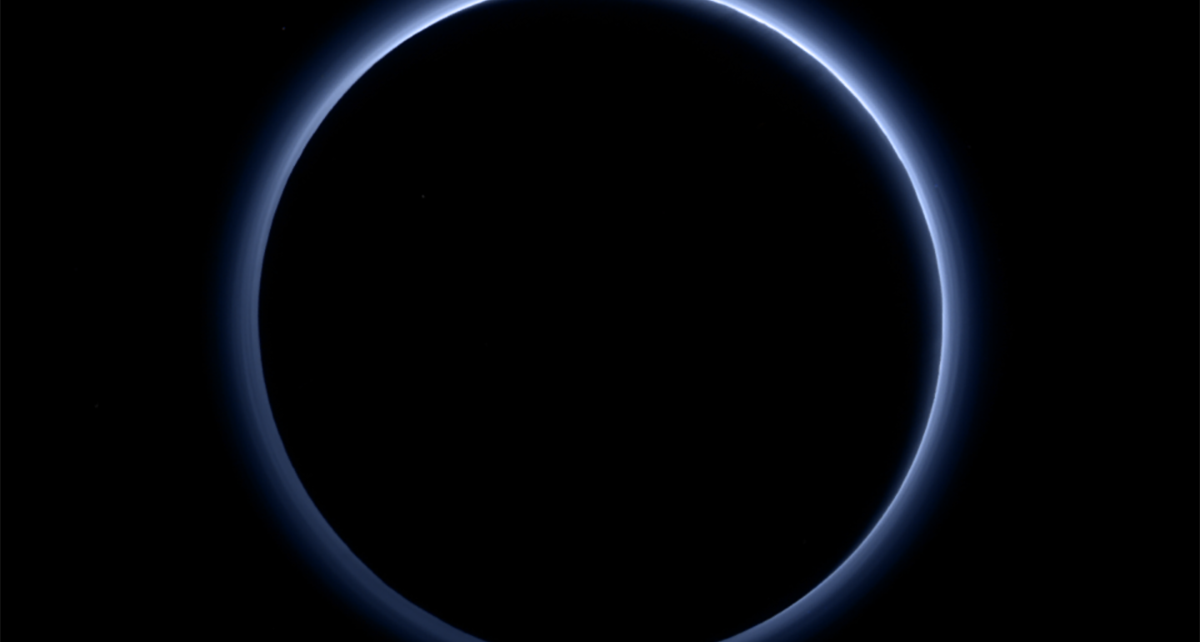The thin atmosphere of Pluto may be far more resilient than scientists thought
The dwarf planet’s thin shell of air is generated by the vaporization of surface ices, which leads to the lofting of nitrogen and small amounts of methane and other gases. That vaporization is driven by sunlight, the intensity of which varies greatly during Pluto’s highly elliptical, 248-year-long trek around the sun.
Many scientists have thought that Pluto’s atmosphere waxes and wanes dramatically as a result, probably even collapsing completely when the dwarf planet is at its farthest from the sun. However, recently published results based on observations by NASA’s Stratospheric Observatory for Infrared Astronomy (SOFIA) may force scientists to rethink such notions.
“Now, we’re questioning if Pluto’s atmosphere is going to collapse in the coming years — it may be more resilient than we thought,” study lead author Michael Person, director of the Massachusetts Institute of Technology’s Wallace Astrophysical Observatory, said in a statement this week.
Most of what we know about that atmosphere, and Pluto itself, comes courtesy of NASA’s New Horizons mission, which flew by the dwarf planet in July 2015.
Two weeks before that epic flyby, SOFIA got a much longer-range look at Pluto’s air, studying the dwarf planet as it passed in front of a distant star. SOFIA, a modified Boeing 747 jet outfitted with a nearly 9-foot-wide (2.7 meters) telescope, stared as starlight streamed through Pluto’s atmosphere.
This “occultation” was visible for just 2 minutes, and only from a small patch of the Pacific Ocean near New Zealand. SOFIA got into position in plenty of time initially, but the plane had to course-correct just two hours before the event when updated predictions revealed that the faint shadow would actually settle onto the waves 200 miles (320 kilometers) farther north than previously thought.
“Capturing that shadow required a bit of scramble. SOFIA has the benefit of being mobile, but the revised flight plan had to be cleared by air traffic control,” William Reach, SOFIA’s associate director for science operations, said in the same statement.
“There were a few tense moments, but the team worked together, and we got clearance,” Reach said. “We reached Pluto’s shadow at exactly the right time and were very happy to have made it!”
SOFIA was able to peer into the middle layers of the dwarf planet’s atmosphere, gathering data in infrared and visible-light wavelengths. Two weeks later, during its flyby, New Horizons collected information about the upper and lower layers, in radio and ultraviolet frequencies.
“These combined observations, taken so close in time, have provided the most complete picture yet of Pluto’s atmosphere,” NASA officials wrote in the same statement.
For example, New Horizons’ imagery revealed that the atmosphere has a distinct blue tint, like the air of Earth. The color is thought to come courtesy of tiny haze particles, which reflect short-wavelength blue light preferentially.
SOFIA’s observations confirmed the existence of those particles and characterized them, revealing that each fleck is just 0.06 to 0.10 microns wide, study team members said—about 1,000 times thinner than a human hair.
After analyzing these and other results—including information gathered by SOFIA’s predecessor, the Kuiper Airborne Observatory, which operated from 1975 to 1995—Person and his colleagues determined that Pluto’s haze likely evolves on short timescales, fading and thickening over the course of just a few years.
This brief cycle suggests that something other than Pluto’s distance from the sun is driving the abundance of haze particles. For example, periods of thick haze may result when particularly ice-rich regions of Pluto’s surface get their time in the sun, the researchers said.
“There’s still a lot we don’t understand, but we’re forced now to reconsider earlier predictions,” Person said. “Pluto’s atmosphere may collapse more slowly than previously predicted, or perhaps not at all. We have to keep monitoring it to find out.”
The study was published online in November 2019 in the journal Icarus.
It’s unclear how many more occultations SOFIA will be able to chase down: President Donald Trump’s proposed budget for 2021 would eliminate funding for the program. But that’s not necessarily a death sentence. No budget is final until Congress passes it, and SOFIA—a joint project of NASA and the German Aerospace Center, known by its German acronym DLR—has escaped proposed termination before.
Copyright 2020 Space.com, a Future company. All rights reserved. This material may not be published, broadcast, rewritten or redistributed.



